3 Relapse Prevention Strategies

Throughout a person’s recovery from a substance use disorder, they may feel triggered to use substances from time to time. Doing so would have negative consequences that are sometimes severe. This is why relapse prevention is an essential skill in recovery.
However, just because a person is in recovery, doesn’t mean they automatically have relapse prevention skills. The key components to preventing relapse are staying plugged into your support system, identifying relapse warning signs, and learning how to cope with triggers for relapse. If these sound like skills you would benefit from learning, read on.
1. Stay plugged into your support system.
In early recovery, it’s important to form a sober support system. This is a network of people who support your recovery and can help you stay sober. Your sober support system can include your family and friends, as long as they support and respect your recovery. It can also include therapists, group members from treatment, a sponsor, and people in AA or NA.
2. Identify relapse warning signs.
Relapse warning signs are the subtle clues that a person is moving towards a relapse. These subtle clues can include pulling away from healthy activities such as attending therapy or talking with your sponsor. Instead, a person moves towards unhealthy activities like hanging out with old friends they used to drink with.
If you can recognize relapse warning signs, you can intervene and prevent a relapse before it happens. When you notice relapse warning signs starting to become apparent, talk with members of your support system and ask for help.
3. Learn how to cope with triggers for relapse.
If you’re in recovery, you’ve probably heard the saying “people, places, and things”. This saying refers to the categories of triggers for relapse. As a therapist who has worked with people with substance use disorders, I like to also include the categories “thoughts” and “emotions”.
If you spend time identifying the people, places, things, thoughts, and emotions that lead you to thinking about using drugs or alcohol, you can figure out what your triggers are. Once you’ve identified your triggers, you can identify ways of coping with them.
For example, if it’s triggering for you to walk past the liquor store every day, you can avoid this trigger by changing your route. However, it’s not always possible to avoid our triggers. If you find feeling bored is a trigger to get high, you can identify some hobbies you’re interested in trying when you’re feeling bored instead.
This article is meant to be a brief overview of relapse prevention skills. You can learn more about relapse prevention skills and identify coping mechanisms in therapy and counseling. Outpatient rehab is a great setting to learn relapse prevention skills, but you may choose to participate in ongoing individual therapy with a counselor.
Relapse is more common than many realize. Relapse is not a sign of failure. If you do relapse, learn about appropriate next steps and how to recommit to your recovery.
Throughout a person’s recovery from a substance use disorder, they may feel triggered to use substances from time to time. Doing so would have negative consequences that are sometimes severe. This is why relapse prevention is an essential skill in recovery.
However, just because a person is in recovery, doesn’t mean they automatically have relapse prevention skills. The key components to preventing relapse are staying plugged into your support system, identifying relapse warning signs, and learning how to cope with triggers for relapse. If these sound like skills you would benefit from learning, read on.
1. Stay plugged into your support system.
In early recovery, it’s important to form a sober support system. This is a network of people who support your recovery and can help you stay sober. Your sober support system can include your family and friends, as long as they support and respect your recovery. It can also include therapists, group members from treatment, a sponsor, and people in AA or NA.
2. Identify relapse warning signs.
Relapse warning signs are the subtle clues that a person is moving towards a relapse. These subtle clues can include pulling away from healthy activities such as attending therapy or talking with your sponsor. Instead, a person moves towards unhealthy activities like hanging out with old friends they used to drink with.
If you can recognize relapse warning signs, you can intervene and prevent a relapse before it happens. When you notice relapse warning signs starting to become apparent, talk with members of your support system and ask for help.
3. Learn how to cope with triggers for relapse.
If you’re in recovery, you’ve probably heard the saying “people, places, and things”. This saying refers to the categories of triggers for relapse. As a therapist who has worked with people with substance use disorders, I like to also include the categories “thoughts” and “emotions”.
If you spend time identifying the people, places, things, thoughts, and emotions that lead you to thinking about using drugs or alcohol, you can figure out what your triggers are. Once you’ve identified your triggers, you can identify ways of coping with them.
For example, if it’s triggering for you to walk past the liquor store every day, you can avoid this trigger by changing your route. However, it’s not always possible to avoid our triggers. If you find feeling bored is a trigger to get high, you can identify some hobbies you’re interested in trying when you’re feeling bored instead.
This article is meant to be a brief overview of relapse prevention skills. You can learn more about relapse prevention skills and identify coping mechanisms in therapy and counseling. Outpatient rehab is a great setting to learn relapse prevention skills, but you may choose to participate in ongoing individual therapy with a counselor.
Relapse is more common than many realize. Relapse is not a sign of failure. If you do relapse, learn about appropriate next steps and how to recommit to your recovery.





